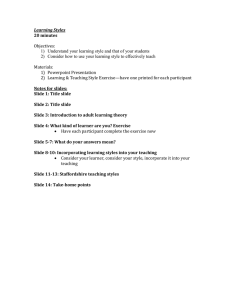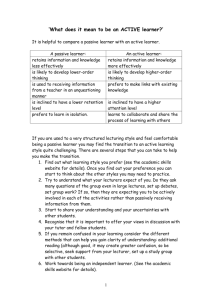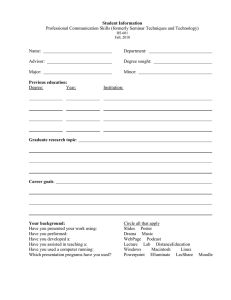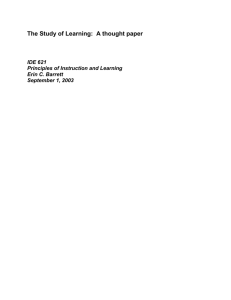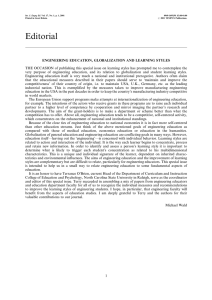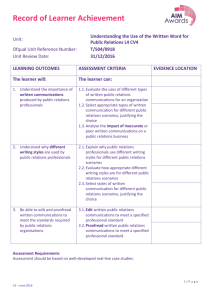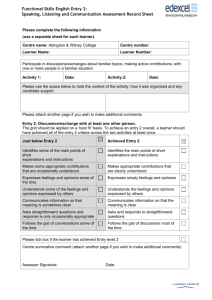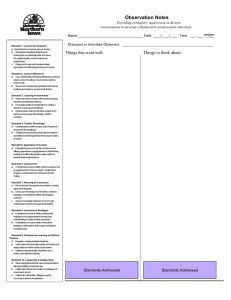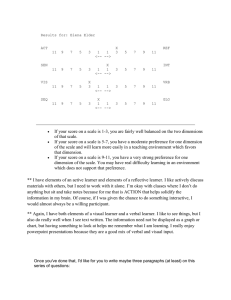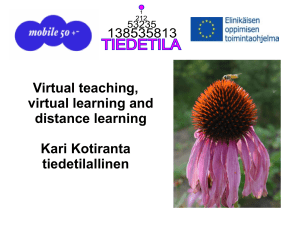Teaching Philosophy - St. Edwards University
advertisement
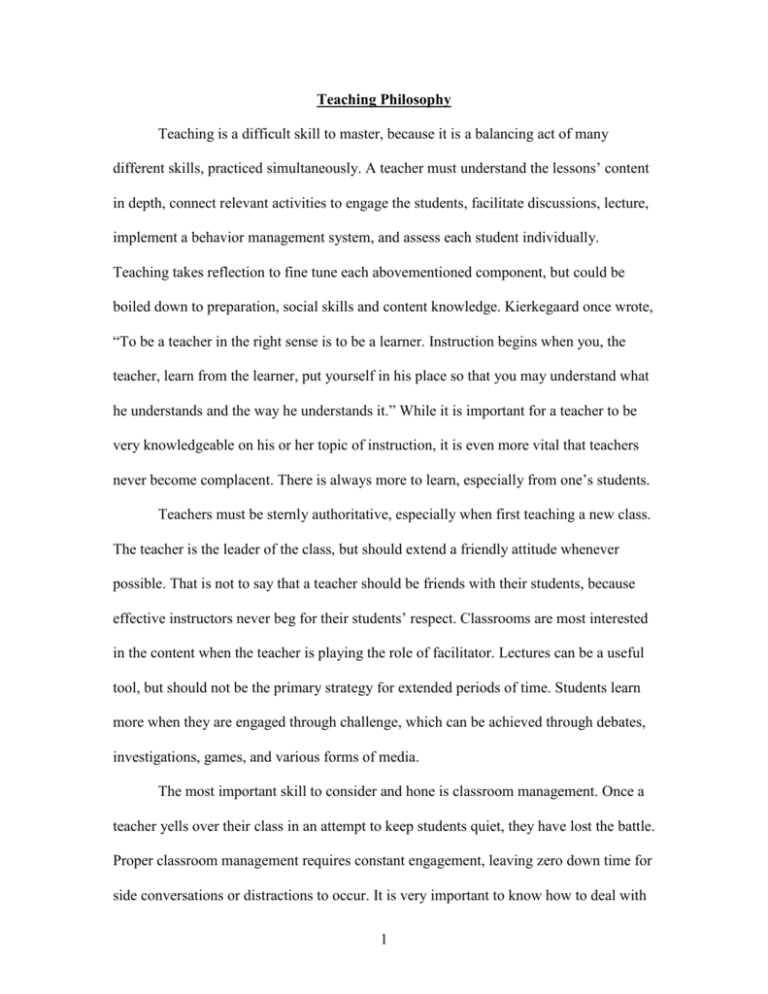
Teaching Philosophy Teaching is a difficult skill to master, because it is a balancing act of many different skills, practiced simultaneously. A teacher must understand the lessons’ content in depth, connect relevant activities to engage the students, facilitate discussions, lecture, implement a behavior management system, and assess each student individually. Teaching takes reflection to fine tune each abovementioned component, but could be boiled down to preparation, social skills and content knowledge. Kierkegaard once wrote, “To be a teacher in the right sense is to be a learner. Instruction begins when you, the teacher, learn from the learner, put yourself in his place so that you may understand what he understands and the way he understands it.” While it is important for a teacher to be very knowledgeable on his or her topic of instruction, it is even more vital that teachers never become complacent. There is always more to learn, especially from one’s students. Teachers must be sternly authoritative, especially when first teaching a new class. The teacher is the leader of the class, but should extend a friendly attitude whenever possible. That is not to say that a teacher should be friends with their students, because effective instructors never beg for their students’ respect. Classrooms are most interested in the content when the teacher is playing the role of facilitator. Lectures can be a useful tool, but should not be the primary strategy for extended periods of time. Students learn more when they are engaged through challenge, which can be achieved through debates, investigations, games, and various forms of media. The most important skill to consider and hone is classroom management. Once a teacher yells over their class in an attempt to keep students quiet, they have lost the battle. Proper classroom management requires constant engagement, leaving zero down time for side conversations or distractions to occur. It is very important to know how to deal with 1 a student with behavior issues, but it is much easier on the teacher and the class to have expectations in place that prevent such issues from ever happening. By all means, when classroom management fails, use behavior management, but the best teachers never have to shout, just wait for their owed silence. Practicing differentiated instruction and assessment is the best way to teach a class with diverse interests and learning styles, or essentially every public school class. Different students thrive during different activities and assessments, because all humans learn differently. Learners may be visual, auditory, intrapersonal, interpersonal, kinesthetic, and so on, so it is important to accommodate their strengths. The sad part apart about so many teachers around the world relying on direct teach is that dull lectures barely cater to any of these learning styles. Likewise for assessment, students may test better from essay questions than multiple-choice questions, enjoy engaging in classroom discussion more than writing in a journal, or prefer to work alone rather than with a partner. When a teacher helps their students to feel comfortable, the students will be on the side of the teacher and try to help their job go smoothly. Lastly, teenagers tend have a heightened sense of fairness. So rules and procedures are especially important. They should be posted where everyone can see them and be enforced with consistency, without seeming arbitrary or biased towards a particular group. It is also imperative, at the beginning of class, to relay to the students why material is being covered, as well as what the expectations are for their work and participation. In conclusion, being a professional educator can be taxing and tedious, but the rewards received through connections and seeing students achieve success far outweigh any necessary labors. 2
